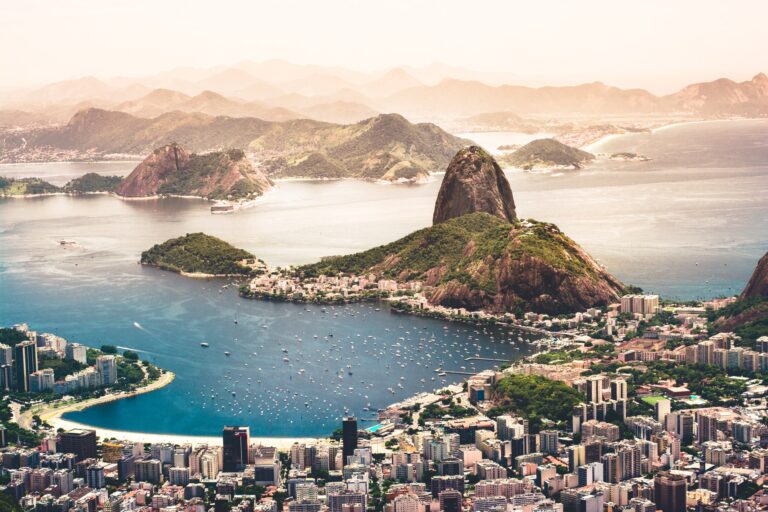Is It Safe to Travel to Ecuador: Latest Update

Safety Considerations
When considering your travel plans to Ecuador, understanding the safety environment is crucial. This section covers crime levels and travel advisory warnings.
Crime Levels in Ecuador
Ecuador faces several security challenges that might impact your travel experience. Violent crime, including incidents of drug trafficking, organized crime, and street gang activity, is unfortunately prevalent, even in tourist destinations. It has been noted that tourists have been assaulted in various locations across the country (Travel.gc.ca).
| Crime Type | Prevalence |
|---|---|
| Drug Trafficking | High |
| Organized Crime | High |
| Street Gang Activity | High |
| Violent Assaults on Tourists | Notable |
Kidnappings, especially express kidnappings, have significantly increased since 2022. Criminals target both locals and foreigners, with some victims being rescued by the police or released in exchange for ransom (Travel.gc.ca).
Organized criminal groups and gangs have intensified their activities, particularly in the coastal provinces of El Oro, Esmeraldas, Guayas, Los Ríos, Manabí, and Santa Elena. Reported crimes include targeted killings, express kidnappings, armed robberies, and the occasional use of explosives against small businesses, gas stations, and government offices (Travel Canada).
| Province | Crime Rate | Common Crimes |
|---|---|---|
| El Oro | High | Targeted Killings, Armed Robberies |
| Esmeraldas | High | Express Kidnapping, Use of Explosives |
| Guayas | High | Organized Crime, Drug Trafficking |
| Los Ríos | High | Street Gangs, Armed Robberies |
| Manabí | High | Targeted Killings, Use of Explosives |
| Santa Elena | High | Express Kidnapping, Organized Crime |
Bomb threats have also become more common throughout Ecuador, notably in cities like Quito and Guayaquil. While most threats have turned out to be false alarms, the situation highlights the ongoing security concerns.
Travel Advisory Warnings
Travel advisories exist to keep you informed about potential risks and dangers in Ecuador. It is always wise to check the latest updates on travel advisories before planning your trip. Due to the rise in violent crime and kidnappings, tourists are advised to exercise increased caution, particularly in high-risk areas.
Several provincial areas are considered high-risk, where heightened criminal activities have been noted. This includes coastal regions like Guayas and Esmeraldas, where tourists should remain particularly vigilant.
| High-Risk Area | Advisory |
|---|---|
| Guayas | Exercise Increased Caution |
| Esmeraldas | High Alert for Violent Crime |
| Coastal Provinces | Increased Crime and Kidnapping Risks |
| Tourist Destinations | Remain Vigilant |
Staying updated on travel advisories can ensure a safer travel experience. For more specific advice on traveling safely in Ecuador, visit our page on is ecuador safe to travel.
When planning your trip, consider reviewing other regional safety guides, such as is it safe to travel to mexico, is it safe to travel to turkey, or is brazil safe to travel. This information can provide a broader context for your travel safety planning.
Security Measures
Tips for Safe Traveling
- Avoid swimming in fresh, unchlorinated water to prevent leptospirosis, a bacterial infection spread in freshwater areas (CDC Travel).
- Discuss with your doctor about taking prescription medicine to prevent malaria if traveling to certain areas of Ecuador. Begin medication before the trip, continue during, and after your visit (CDC Travel).
- Exercise increased caution due to civil unrest, crime, and kidnapping. Violent crimes including murder, assault, and armed robbery are prevalent, particularly in areas with transnational criminal organizations (Travel.State.Gov).
- Be vigilant due to rising violent crime, express kidnappings, and gang violence. Observe a high degree of caution when visiting the country (Travel Canada).
- Keep aware of increased incidents of violent crime and theft in cities like Quito, including armed robberies during riverboat tours.
High-Risk Areas to Avoid
- Escalated activities of organized criminal groups and gangs are prevalent, especially in the coastal provinces of El Oro, Esmeraldas, Guayas, Los Ríos, Manabí, and Santa Elena. Crimes include targeted killings, express kidnappings, armed robberies, and occasional use of explosives (Travel Canada).
- Express kidnappings, targeting both locals and foreigners, have surged since 2022. Victims often face cash withdrawals at ATMs or online bank transfers, sometimes facilitated by taxi or rideshare drivers.
By staying informed about these tips and areas to avoid, you can better assess is it safe to travel to Ecuador and make well-informed travel decisions. If you’re interested in safety information for other destinations, check our guides on is it safe to travel to Mexico or is it safe to travel to Colombia.
Environmental Factors
Energy Rationing Impacts
Ecuador is currently experiencing nationwide energy rationing due to a severe ongoing drought. This situation has led to periodic power outages, affecting public services and potentially impacting your travel plans. To stay informed, it’s advisable to consult local authorities for information on regional schedules of planned power outages. You can find this information on the website of the Ministry of Energy and Mines (Travel Canada).
Here is a summary table of power outage schedules across major regions:
| Region | Scheduled Power Outages (Daily) |
|---|---|
| Quito | 2 hours |
| Guayaquil | 3 hours |
| Cuenca | 1.5 hours |
| Ambato | 2 hours |
| Machala | 1 hour |
These outages can affect various aspects of your trip, including transportation, accommodation, and communication services. Therefore, always have a backup plan, such as portable chargers and alternative means of transportation.
State of Internal Armed Conflict
Ecuador declared a nationwide state of “internal armed conflict” on January 9, 2024, in response to a significant rise in crime and gang violence. To reinforce security, the government has increased the presence of military and police forces across the country. Additionally, a state of emergency was declared in specific provinces and districts in May 2024, with measures such as curfews and asset seizures being implemented.
Table of affected areas under state of emergency:
| Province | Specific Measures |
|---|---|
| Guayas | Curfews, increased military presence |
| Esmeraldas | Curfews, asset seizures |
| Manabí | Increased police patrols |
| Sucumbíos | Military checkpoints |
Travelers are advised to avoid high-risk areas and be aware of any local advisories or restrictions. Always stay updated by visiting reputable sources like the Ministry of Interior and local news outlets. For additional safety measures regarding traveling to Ecuador, read our section on is ecuador safe to travel.
Being informed about these environmental and security factors will help you make well-informed decisions while planning your trip to Ecuador. For advice on safe travel in other destinations, such as is it safe to travel to colombia or is it safe to travel to brazill, visit our related sections.
Transportation Infrastructure
Ecuador’s transportation infrastructure is a significant aspect to consider when determining is it safe to travel to Ecuador. Here we delve into the options available and how efficient and sustainable these are for tourists.
Transport Mode Choice
When traveling in Ecuador, tourists have several transportation options at their disposal. The choice of mode depends on various factors such as the length of stay, purpose of travel, and destination characteristics (Source).
| Transport Mode | Features | Best For |
|---|---|---|
| Bus | Widely available, cost-effective, reliable schedules | Long-distance travel, Budget travelers |
| Taxi | Convenient, relatively affordable in urban areas | Short-distance travel, Urban commuting |
| Car Rental | Flexibility, freedom to explore off-the-beaten-path destinations | Road trips, Custom travel itineraries |
| Domestic Flights | Fast, connects major cities and tourist spots | Long-distance travel, Time-sensitive trips |
| Train | Limited routes, scenic views | Specific regional travel, Tourist routes |
Tourists should select their mode of transport based on their specific needs and travel plans. Public transportation, such as buses and taxis, are generally reliable and cost-effective, while car rentals and domestic flights offer more freedom and speed for covering larger distances.
Efficiency and Sustainability
Ecuador’s transportation system has made strides in terms of efficiency and sustainability, though there is room for improvement compared to leading global examples like Japan’s shinkansen or Singapore’s MRT system.
Efficiency: The efficiency of Ecuador’s transport network is largely determined by its road and air travel infrastructure. While public buses are frequent and form a backbone of inter-city travel, congestion in urban areas can affect travel times. Domestic flights provide a faster option for long-distance travel, connecting major tourist locations efficiently.
Sustainability: Efforts to promote sustainability in Ecuadorian transport include the introduction of more environmentally-friendly buses and initiatives to enhance the public transportation infrastructure. However, it’s advisable to stay informed about current conditions, especially regarding potential environmental factors that might affect travel.
If considering similar travel infrastructure in other regions, you can check how transport systems in places like Japan, France, and Singapore compare in terms of efficiency and sustainability.
Tourists should explore different transportation options based on their travel needs and preferences while keeping an eye on safety considerations and environmental impact. For specific travel recommendations and updates, it’s essential to stay updated with local travel advisories and news.
For more insights on safety in other destinations, read our guides on is it safe to travel to mexico, is cancun safe to travel, and is it safe to travel to egypt.
Health Precautions
When considering is it safe to travel to Ecuador, health precautions play a crucial role in ensuring a safe and enjoyable trip. Here are the disease prevention measures and vaccination recommendations you need to know.
Disease Prevention Measures
To protect yourself from various diseases while traveling to Ecuador, it’s important to take the following preventive measures:
-
Chikungunya Virus: Evidence suggests that there has been chikungunya virus transmission in Ecuador over the past five years. Travelers, especially those older than 40, immunocompromised individuals, or those with chronic medical conditions, should consider vaccination if planning to visit high-risk areas within two weeks.
-
Malaria Prevention: The CDC recommends that travelers to certain regions of Ecuador take prescription medication to prevent malaria. Begin the medication several days before your trip and continue during and after the journey. Consult a doctor to determine the most suitable medication for your needs (CDC Travel).
-
Rabies Prevention: Dogs infected with rabies can be found in Ecuador. Consider pre-exposure vaccination, especially if you plan to be in rural areas or have activities that increase risk. Rabies vaccines may only be accessible in larger urban medical facilities (CDC Travel).
-
Leptospirosis Prevention: Avoid swimming in fresh, unchlorinated water to prevent leptospirosis, a bacterial infection present in Ecuador’s freshwater bodies.
Vaccination Recommendations
Before traveling to Ecuador, ensure you are up-to-date with the following vaccinations:
| Vaccine | Recommended For |
|---|---|
| Measles, Mumps, Rubella (MMR) | All travelers without full vaccination at least 2 weeks prior to departure |
| Hepatitis A | All travelers, as the virus can be transmitted through contaminated food or water |
| Hepatitis B | Travelers who may have sexual contact, need medical treatment, or get tattoos or piercings |
| Typhoid | Travelers visiting smaller cities, villages, or rural areas where sanitation is not as good |
| Rabies | Travelers involved in activities that could bring them into contact with dogs or other mammals |
| Yellow Fever | Required for travelers 9 months or older visiting areas east of the Andes |
Figures courtesy CDC Travel
Additionally, always carry sufficient quantities of any prescription medications you are currently taking, as they may not be readily available in Ecuador. For more detailed information, visit our sections on is it safe to travel to Costa Rica, is it safe to travel to Peru, and other travel safety considerations.
Proper preparation and awareness will help ensure your trip to Ecuador is both safe and enjoyable. For additional tips on protecting your health while traveling, refer to our article on health precautions for travelers.
Specific Travel Recommendations
Land Border Crossing Requirements
Traveling to Ecuador via land border crossings from neighboring countries like Colombia or Peru requires specific documentation. All foreign citizens, including U.S. citizens, must present an apostilled certificate demonstrating a lack of criminal record. More detailed information can be found on the Ministry of Tourism’s webpage and at Ecuador.Travel.
| Requirement | Details |
|---|---|
| Apostilled Certificate | Demonstrates a lack of criminal record |
| Valid Passport | Must be presented at the border |
| Additional Documentation | Check the Ministry of Tourism’s webpage for updates |
Ensure you have all necessary documentation to avoid issues at the border and to help determine is Ecuador safe to travel.
Areas to Exercise Caution
Certain areas in Ecuador have higher risks associated with crime and violence. It’s important to stay informed about these regions and exercise increased caution when traveling.
-
Provinces with High Crime Rates:
-
Guayaquil: Reported incidents of violent criminal activity by transnational criminal groups and local gangs. Exercise heightened vigilance in this city.
-
El Oro, Los Rios, and Guayas: Specific cities in these provinces exhibit high crime rates.
-
Esmeraldas Province: Certain areas within this province are advised against travel.
-
Border Areas:
-
Colombia Border: Avoid travel within 20km of the border with Colombia, except the official border crossing at Tulcan, due to risks of kidnapping and violence associated with drug-related criminal organizations (Smartraveller).
-
Peru Border: Areas near the border with Peru also exhibit higher criminal activity and are undergoing landmine clearance efforts.
| Area | Risk Level | Additional Notes |
|---|---|---|
| Guayaquil | High | Violent crime by gangs |
| Border with Colombia | Very High | Kidnapping, drug-related crime |
| El Oro, Los Rios, Guayas | High | High crime rates in specific cities |
| Esmeraldas Province | High | Advised against travel |
For further details on safe travel tips and other precautions, visit our pages on is it safe to travel to colombia and is peru safe to travel to.
By following these recommendations and staying informed, you can better navigate the question of is it safe to travel to ecuador and have a safer, more enjoyable trip.






